Abstract
1 Specific high affinity binding sites for [125I]-angiotensin II have been identified in crude basolateral and brush border membranes from rat cortex. 2 A central high affinity site, KD 0.62 nM; Bmax 299 fmol/mg was identified as part of a complex multicomponent binding system. 3 This high affinity site was saturable and exhibited specificity for angiotensin II analogues and closely related peptides but not for bradykinin, substance P or peptide fragments of angiotensin II. 4 Specific [125I]-angiotensin II binding was partially dependent on NaCl. Absence of NaCl resulted in a decrease in Bmax, had no effect on the rate of association but increased the rate of dissociation of [125I]-angiotensin from its binding site.
Full text
PDF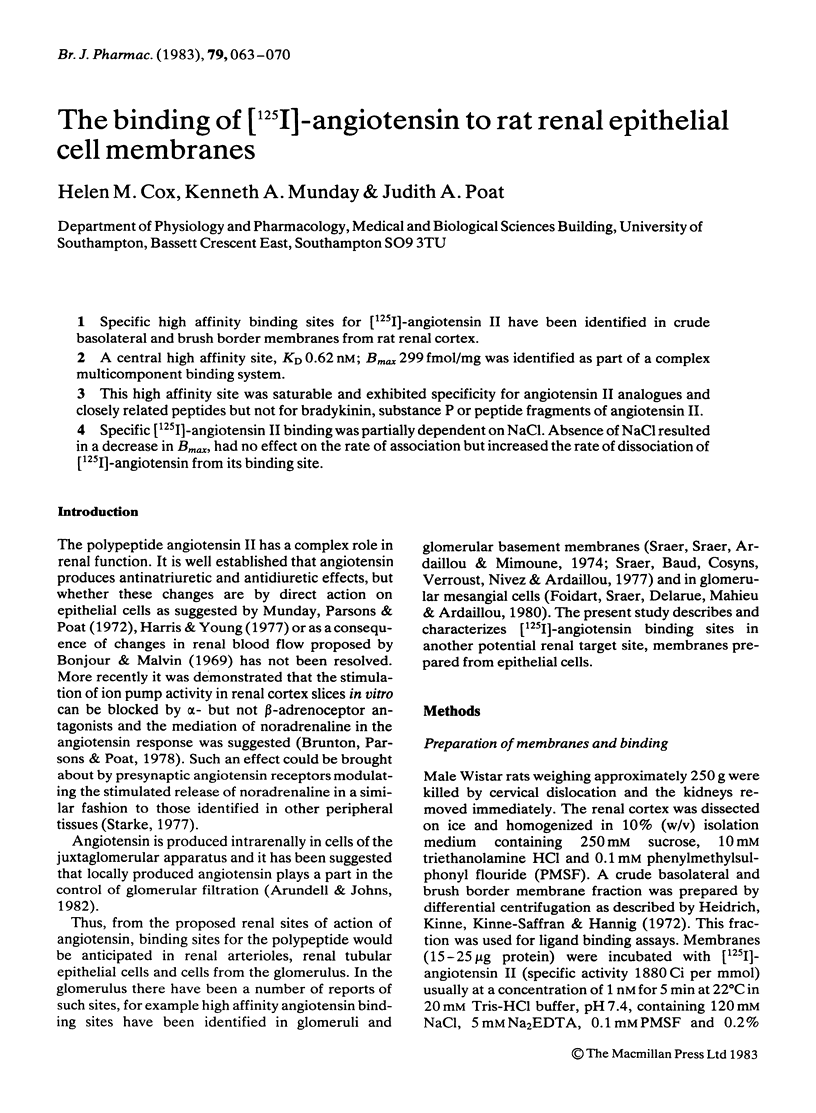
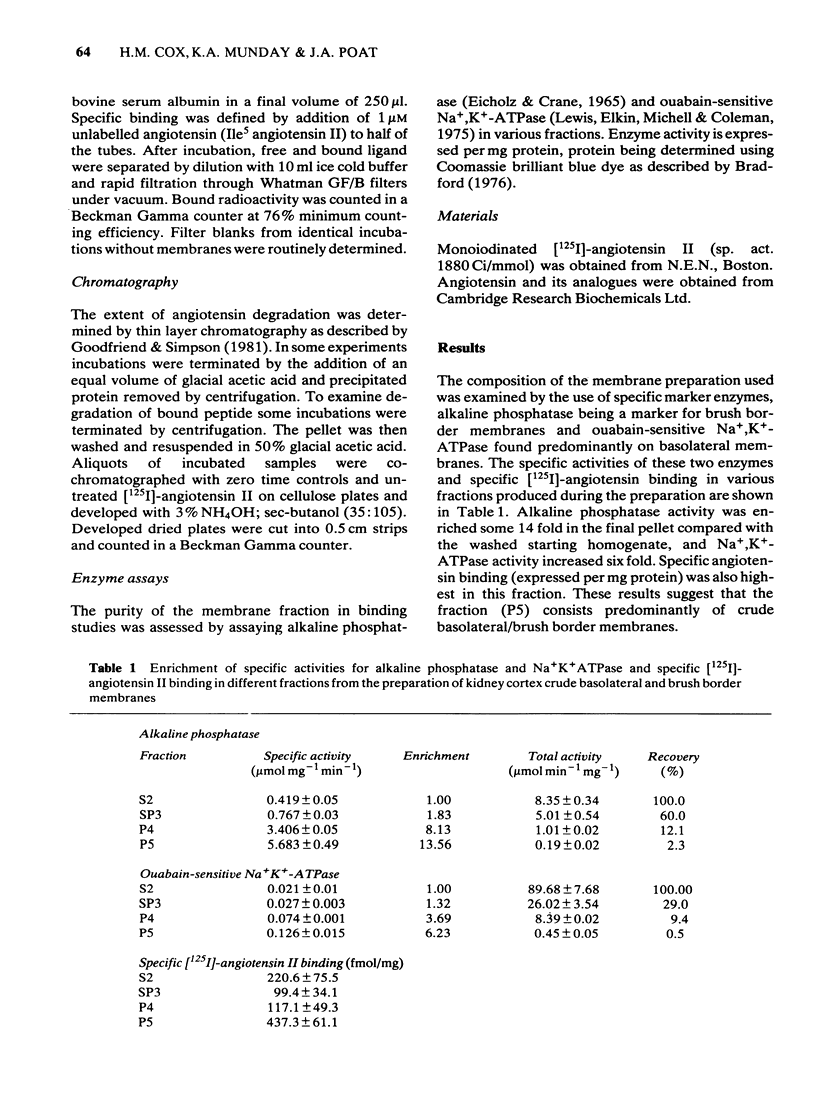
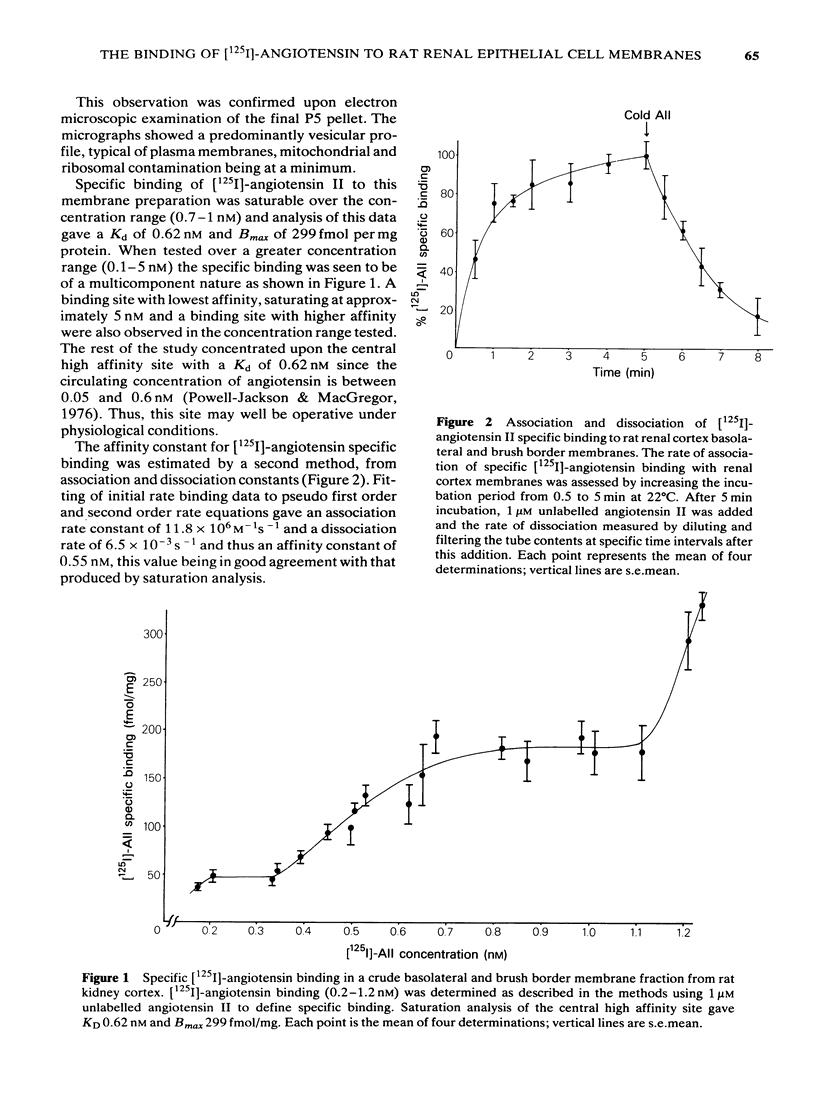
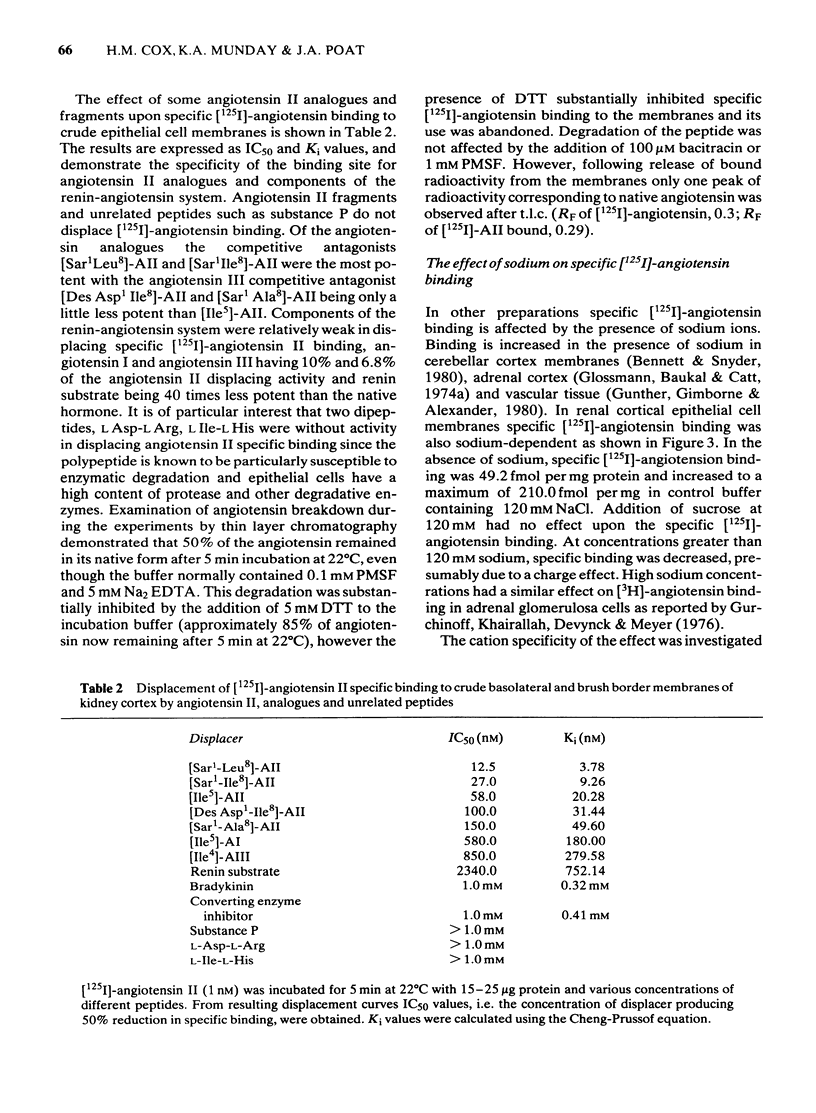
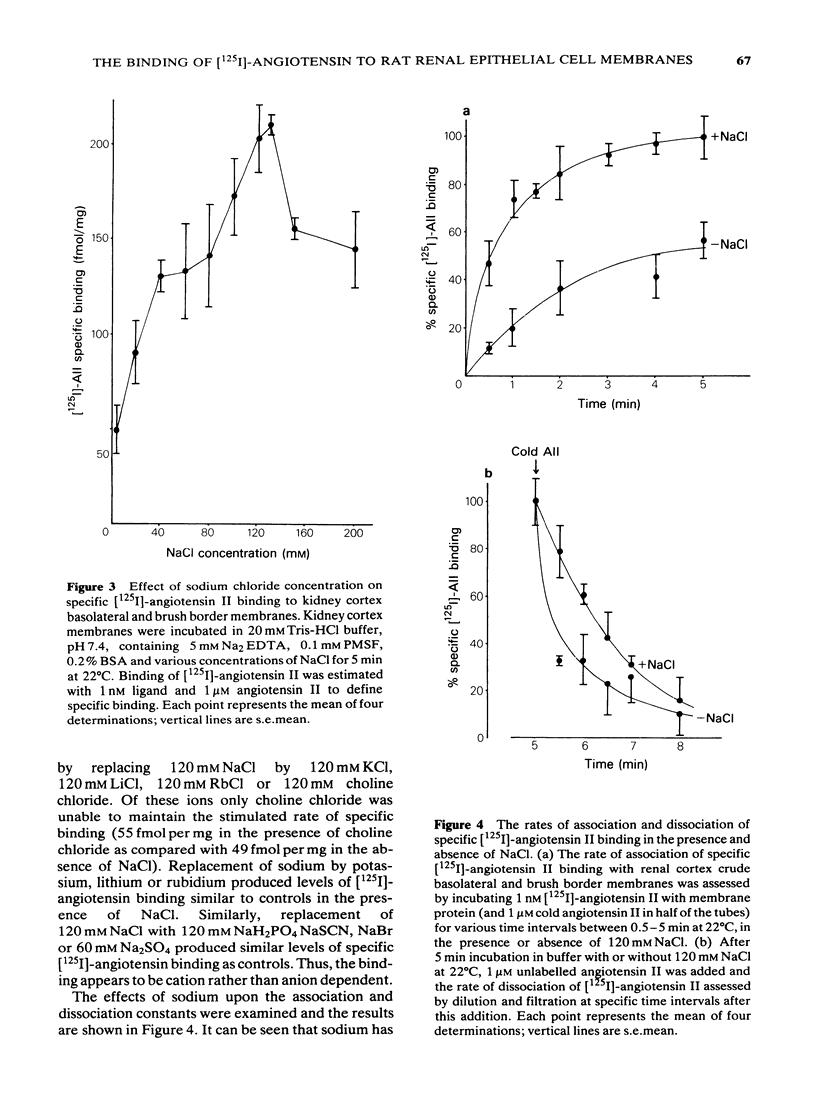
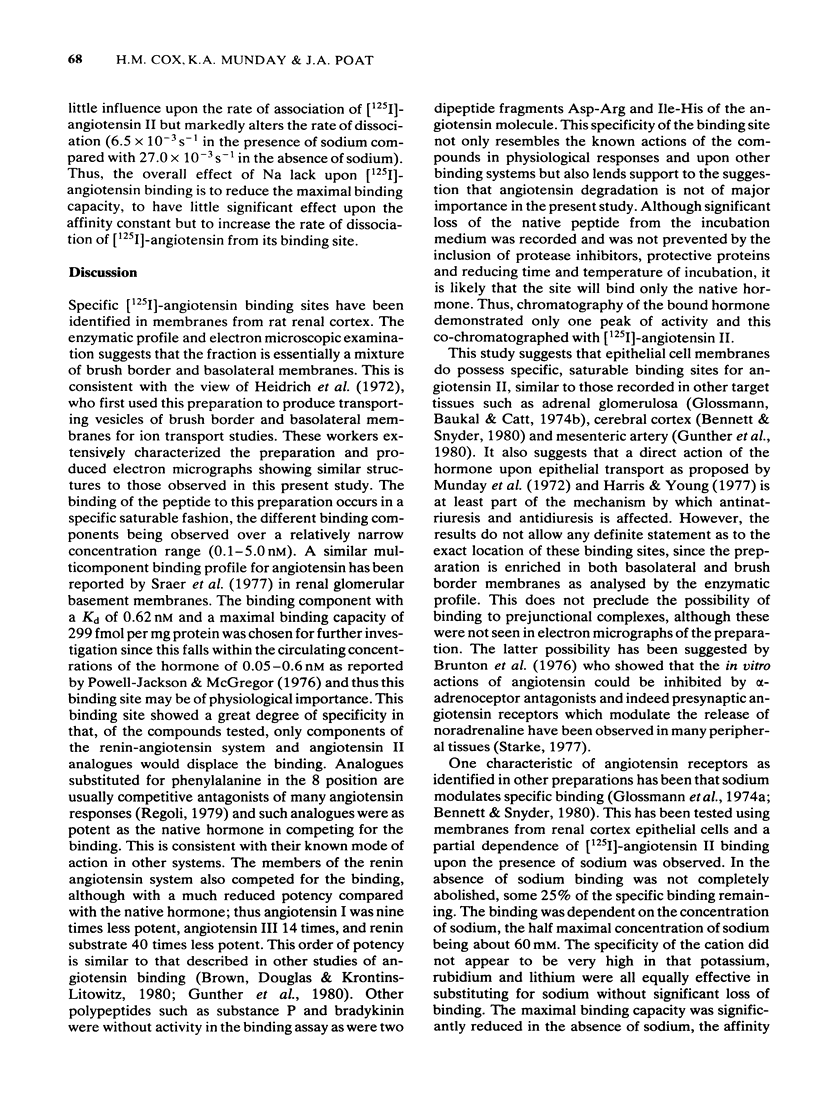
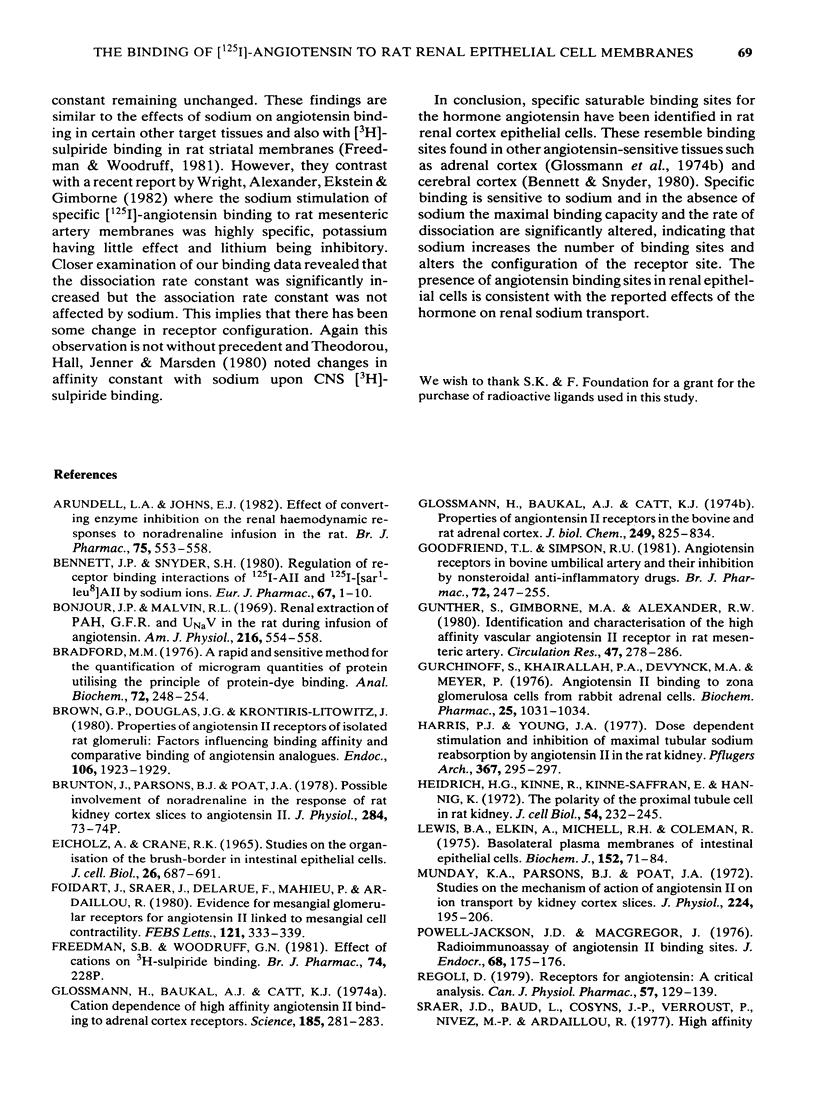
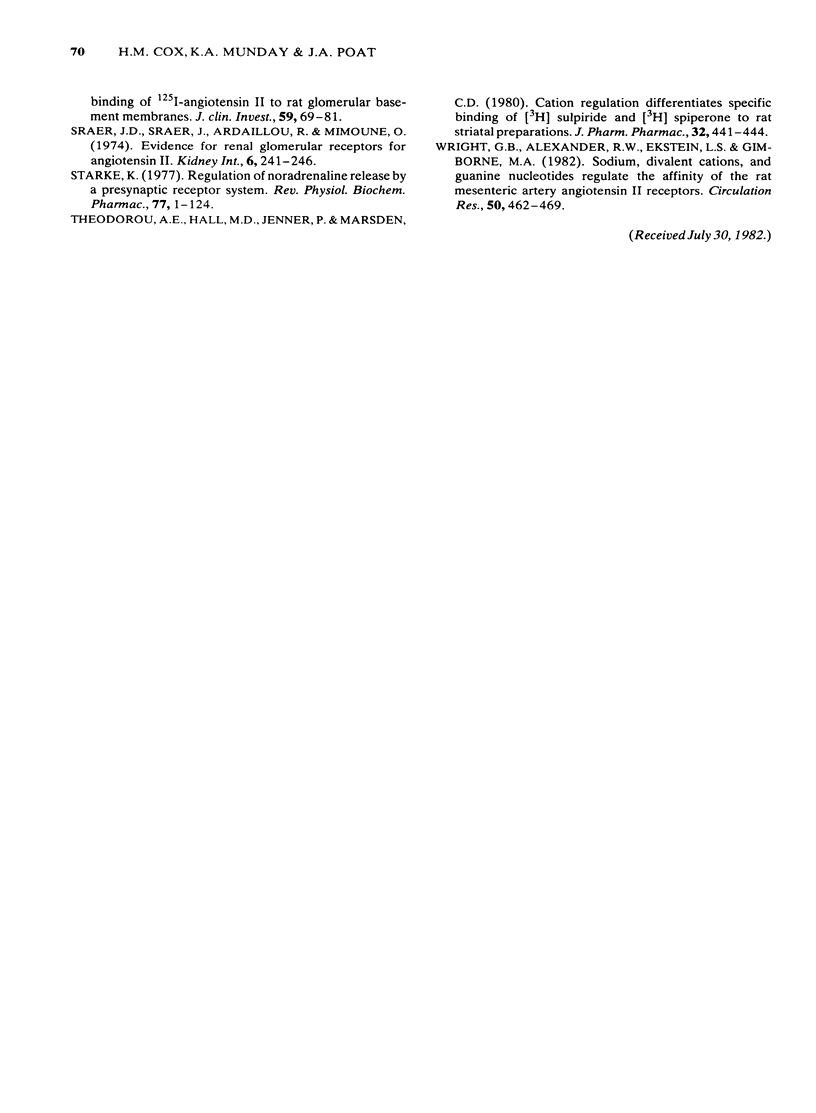
Selected References
These references are in PubMed. This may not be the complete list of references from this article.
- Arundell L. A., Johns E. J. Effect of converting enzyme inhibition on the renal haemodynamic responses to noradrenaline infusion in the rat. Br J Pharmacol. 1982 Mar;75(3):553–558. doi: 10.1111/j.1476-5381.1982.tb09173.x. [DOI] [PMC free article] [PubMed] [Google Scholar]
- Bennett J. P., Jr, Snyder S. H. Regulation of receptor binding interactions of 125I-angiotensin II and 125I-[sarcosine1,leucine8]angiotensin II, an angiotensin antagonist, by sodium ion. Eur J Pharmacol. 1980 Oct 3;67(1):1–10. doi: 10.1016/0014-2999(80)90002-3. [DOI] [PubMed] [Google Scholar]
- Bonjour J. P., Malvin R. L. Renal extraction of PAH, GFR, and UNaV in the rat during infusion of angiotensin. Am J Physiol. 1969 Mar;216(3):554–558. doi: 10.1152/ajplegacy.1969.216.3.554. [DOI] [PubMed] [Google Scholar]
- Bradford M. M. A rapid and sensitive method for the quantitation of microgram quantities of protein utilizing the principle of protein-dye binding. Anal Biochem. 1976 May 7;72:248–254. doi: 10.1006/abio.1976.9999. [DOI] [PubMed] [Google Scholar]
- Brown G. P., Douglas J. G., Krontiris-Litowitz J. Properties of angiotensin II receptors of isolated rat glomeruli: factors influencing binding affinity and comparative binding of angiotensin analogs. Endocrinology. 1980 Jun;106(6):1923–1929. doi: 10.1210/endo-106-6-1923. [DOI] [PubMed] [Google Scholar]
- Brunton J., Parsons B. J., Poat J. A. Possible involvement of noradrenaline in the response of rat kidney cortex slices to angiotensin [proceedings]. J Physiol. 1978 Nov;284:73P–74P. [PubMed] [Google Scholar]
- Foidart J., Sraer J., Delarue F., Mahieu P., Ardaillou R. Evidence for mesangial glomerular receptors for angiotensin II linked to mesangial cell contractility. FEBS Lett. 1980 Dec 1;121(2):333–339. doi: 10.1016/0014-5793(80)80375-9. [DOI] [PubMed] [Google Scholar]
- Glossmann H., Baukal A. J., Catt K. J. Properties of angiotensin II receptors in the bovine and rat adrenal cortex. J Biol Chem. 1974 Feb 10;249(3):825–834. [PubMed] [Google Scholar]
- Glossmann H., Baukal A., Catt K. J. Cation dependence of high-affinity angiotensin II binding to adrenal cortex receptors. Science. 1974 Jul 19;185(4147):281–283. doi: 10.1126/science.185.4147.281. [DOI] [PubMed] [Google Scholar]
- Goodfriend T. L., Simpson R. U. Angiotensin receptors in bovine umbilical artery and their inhibition by nonsteroidal anti-inflammatory drugs. Br J Pharmacol. 1981 Feb;72(2):247–255. doi: 10.1111/j.1476-5381.1981.tb09121.x. [DOI] [PMC free article] [PubMed] [Google Scholar]
- Gunther S., Gimbrone M. A., Jr, Alexander R. W. Identification and characterization of the high affinity vascular angiotensin II receptor in rat mesenteric artery. Circ Res. 1980 Aug;47(2):278–286. doi: 10.1161/01.res.47.2.278. [DOI] [PubMed] [Google Scholar]
- Gurchinoff S., Khairallah P. A., Devynck M. A., Meyer P. Angiotensin II binding to zona glomerulosa cells from rabbit adrenal glands. Biochem Pharmacol. 1976 May 1;25(9):1031–1034. doi: 10.1016/0006-2952(76)90491-3. [DOI] [PubMed] [Google Scholar]
- Harris P. J., Young J. A. Dose-dependent stimulation and inhibition of proximal tubular sodium reabsorption by angiotensin II in the rat kidney. Pflugers Arch. 1977 Jan 17;367(3):295–297. doi: 10.1007/BF00581370. [DOI] [PubMed] [Google Scholar]
- Heidrich H. G., Kinne R., Kinne-Saffran E., Hannig K. The polarity of the proximal tubule cell in rat kidney. Different surface charges for the brush-border microvilli and plasma membranes from the basal infoldings. J Cell Biol. 1972 Aug;54(2):232–245. doi: 10.1083/jcb.54.2.232. [DOI] [PMC free article] [PubMed] [Google Scholar]
- Lewis B. A., Elkin A., Michell R. H., Coleman R. Basolateral plasma membranes of intestinal epithelial cells. Identification by lactoperoxidase-catalysed iodination and isolation after density perturbation with digitonin. Biochem J. 1975 Oct;152(1):71–84. doi: 10.1042/bj1520071. [DOI] [PMC free article] [PubMed] [Google Scholar]
- Munday K. A., Parsons B. J., Poat J. A. Studies on the mechanism of action of angiotensin on ion transport by kidney cortex slices. J Physiol. 1972 Jul;224(1):195–206. doi: 10.1113/jphysiol.1972.sp009889. [DOI] [PMC free article] [PubMed] [Google Scholar]
- Powell-Jackson F. D., Macgregor J. Radioimmunoassay of angiotensin II in the rat. J Endocrinol. 1976 Jan;68(1):175–176. doi: 10.1677/joe.0.0680175. [DOI] [PubMed] [Google Scholar]
- Regoli D. Receptors for angiotensin: a critical analysis. Can J Physiol Pharmacol. 1979 Feb;57(2):129–139. doi: 10.1139/y79-020. [DOI] [PubMed] [Google Scholar]
- Sraer J. D., Sraer J., Ardaillou R., Mimoune O. Evidence for renal glomerular receptors for angiotensin II. Kidney Int. 1974 Oct;6(4):241–246. doi: 10.1038/ki.1974.105. [DOI] [PubMed] [Google Scholar]
- Sraer J., Baud L., Cosyns J. P., Verroust P., Nivez M. P., Ardaillou R. High affinity binding of 125I-angiotensin II to rat glomerular basement membranes. J Clin Invest. 1977 Jan;59(1):69–81. doi: 10.1172/JCI108623. [DOI] [PMC free article] [PubMed] [Google Scholar]
- Starke K. Regulation of noradrenaline release by presynaptic receptor systems. Rev Physiol Biochem Pharmacol. 1977;77:1–124. doi: 10.1007/BFb0050157. [DOI] [PubMed] [Google Scholar]
- Theodorou A. E., Hall M. D., Jenner P., Marsden C. D. Cation regulation differentiates specific binding of [3H]sulpiride and [3H]spiperone to rat striatal preparations. J Pharm Pharmacol. 1980 Jun;32(6):441–444. doi: 10.1111/j.2042-7158.1980.tb12965.x. [DOI] [PubMed] [Google Scholar]
- Wright G. B., Alexander R. W., Ekstein L. S., Gimbrone M. A., Jr Sodium, divalent cations, and guanine nucleotides regulate the affinity of the rat mesenteric artery angiotensin II receptor. Circ Res. 1982 Apr;50(4):462–469. doi: 10.1161/01.res.50.4.462. [DOI] [PubMed] [Google Scholar]


